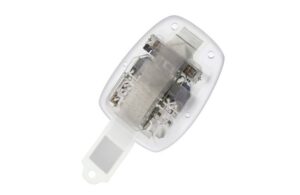
The Science Eye [Image from Science]
Brain-computer-interface (BCI) developer Science announced has launched a platform to enhance medical device manufacturing outsourcing.
Science CEO Max Hodak previously co-founded Neuralink, Elon Musk’s venture into brain-computer interfaces (BCIs). He served as president at Neuralink until 2021. His new venture with Science includes new BCI technology that doesn’t require an in-skull implant.
Last November, the company unveiled the Science Eye, a visual prosthesis. It targets retinitis pigmentosa (RP) and dry age-related macular degeneration (AMD), two forms of serious blindness. The combination device uses an optogenetic gene therapy targeted at the cells of the optic nerve. It combines that with an implanted, flexible thin-film, ultradense microLED display panel inserted directly over the retina.
Science was among the top medical device venture capital dealmakers of 2022 with a $112.7 million fundraise.
The latest venture for the company began with the acquisition of a small micro electronic mechanical systems (MEMS) foundry in North Carolina. After about three months, with a soft launch as it went, the company said “Science Foundry” is now open for business.
About the Science Foundry
The Science Foundry’s goal is to enable companies to build on its infrastructure, the company said. The foundry offers access to Science’s public thin-film electrode standard technology. Companies can build upon its capabilities and infrastructure while Science continues to improve its process development kits.
Over time, the company expects the Science Foundry to include a range of services. These allow the company to develop its own flagship medical devices and puts it in a position to vertically integrate. The company said it operates the MEMS capabilities as a “fairly independent unit” and plans to continue investment in North Carolina.
“This is just the beginning of a very long road for us, and there are still many things to figure out and rough edges to sand down,” Science said in a news release. “But the basic parts are all there, and we hope you find it easy to navigate.”